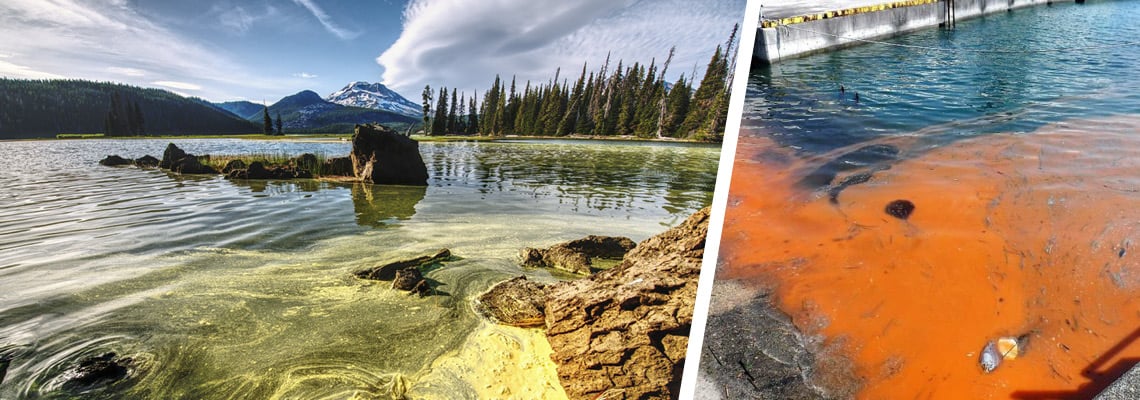Big Data approach creates baseline of “troublemaker” harmful algal blooms
Big Data approach creates baseline of “troublemaker” harmful algal blooms
Experts from 112 countries have joined forces to help create the worlds first-ever baseline to facilitate future tracking and detection of changes in the world's HAB problems.
Identifying HAB “troublemakers” with Big Data
Thousands of microalgae species form the foundation of aquatic food chains, helping to control atmospheric CO2 levels, and produce roughly half of the world's oxygen.
However, there are approximately 200 species of harmful algal blooms (HABs) that can produce potent toxins, or cause harm through their sheer biomass.
A known menace to water treatment operators, toxic or non-toxic microalgae blooms can cause discoloured water, scum, mucilage or foam.
“As well as potentially leading to mass fish kills, including in aquaculture operations, HABs can harm tourism and lead to closures of desalination plants and beaches.”
As well as potentially causing mass fish kills, including in aquaculture operations, HABs can harm tourism and lead to closures of desalination plants and beaches.
Now one of the biggest global coindinated efforts has resulted in a seven-year analysis of almost 10,000 HAB events over three decades.
A first-ever big data approach is hoping to detect changes in the costly phenomenon's global distribution, frequency, and intensity.
The results will be published by the HAB Programme of UNESCO's Intergovernmental Oceanographic Commission.
What does the analysis include?
More than 100 scientists in 112 countries contributed to the synthesis and analysis of HAB data gathered from 1985 to 2018.
The work assesses the occurrence of toxin-producing and other harmful microalgae, and the status and probability of change in HAB frequencies, intensities, and range resulting from environmental change at the local and global scale.
The study involved mining the global Harmful Algae Event Database (HAEDAT), consisting of 9,503 events with one or more impacts on human society.
It also included the Ocean Biodiversity Information System (OBIS), which contains seven million microalgal records including, 289,668 toxic algal species occurrences.
Publication of the key findings in a prominent journal will be followed by a complete set of 13 papers to be published in a special edition of Harmful Algae.
Three ambitions to help future researchers
Three major ambitions have been established for the work, to help future researchers determine:
- The distribution of HAB species, HAB events, and toxins globally
- How the geographic distribution, characteristic, frequency and intensity of HABs are changing and if these changes are attributable to global change
- How climate change and other factors alter the impacts of HABs -- on human health, ecosystems, economics, food and water security
"The most frequently asked questions about Harmful Algal Blooms (HABs) are if they are increasing and expanding, and what are the mechanisms behind observed trends," the authors said.
“The most frequently asked questions about Harmful Algal Blooms (HABs) are if they are increasing and expanding.”
"Indeed a global expansion of HABs and its causes have long been debated. Eutrophication, human-mediated introduction of alien harmful species, climatic variability, and aquaculture have all been mentioned as possible causes of an expansion and intensification of HABs. Our research sheds an authoritative light on the problem and will help guide responses to it for decades to come."
IOC UNESCO project partners include the International Atomic Energy Agency, the International Council for Exploration of the Sea, the North Pacific Marine Science Organization and the International Society for the Study of Harmful Algae
Share your water technology stories with us
Do you have an innovation, research results or an other interesting topic you would like to share with the international water technology industry? The Aquatech website and social media channels are a great platform to showcase your stories!
Please contact our Sr Brand Marketing Manager Annelie Koomen.
Are you an Aquatech exhibitor?
Make sure you add your latest press releases to your Company Profile in the Exhibitor Portal for free exposure.
We promise never to send you spam and you can unsubscribe at any time!
